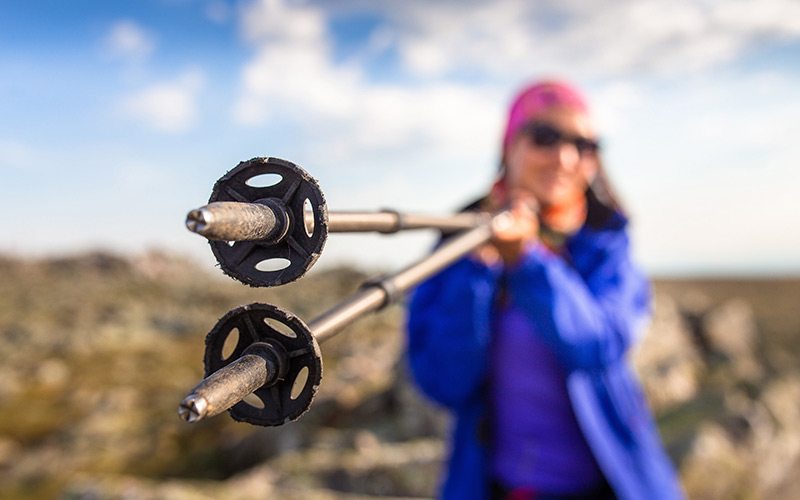
Extensive use of trekking poles on popular trails can tear up soft soil, damage trailside vegetation, and scar rocks. The good news is, you can reduce those damaging effects by following a few best practices.
- Be mindful of the potential environmental and visual impacts where you plant your poles.
- Don’t use trekking poles when you don’t need them and avoid using them in soft conditions, such as mud or loose dirt, where your poles could leave a trail of devastation in your wake.
- Use rubber tips when possible. The metal carbide at the ends of trekking poles can leave unsightly scars, but most poles can be fitted with an accessory pair of rubber tips. These provide ample traction in typical conditions. Just make sure they fit securely so you don’t accidentally leave one behind on the trail.
- Consider removing the baskets at the end of the poles in areas of dense vegetation. While baskets can be helpful in snow or on other loose ground, they are notorious for snagging and damaging surrounding plants.